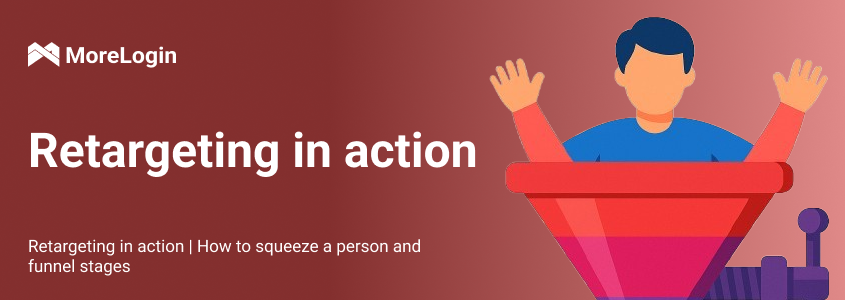
- Product

- Pricing
- Affiliate Program
- Use Cases
- Resource


In the affiliate marketing world, retargeting is a frequent topic — and also a controversial one. Some say, “Retargeting is useless,” especially when it comes to running Facebook traffic and trying to close audiences. But today, we’ll explore how to effectively bring users back into your funnel and finally convert them. Let’s break it down step by step.
Retargeting is a strategy to bring back users who already showed interest in your product — like those who visited your website or registered, but didn’t complete the desired action. The idea is simple and effective: chase the user and convince them to do what you paid for the traffic to achieve.
It starts by placing a pixel on a pre-lander or PWA. This pixel tracks specific events (e.g., visits or sign-ups), and then ad networks help you “follow” these users across various platforms — even those outside Facebook or Google’s reach, like adult content sites or streaming platforms.

Another key benefit is the flexibility in ad formats. You’re not limited to just one — you can pick based on where the user is in the funnel:
Great for wide reach and attention-grabbing. Ideal for hitting users immediately after their first visit or introducing your offer on new platforms.
Perfect for direct engagement. These show up on the user’s device, even if they’re not online, increasing chances of immediate action.
Less intrusive and more natural, these appear directly on the website — useful for soft re-engagement and warming users up.
The classic tool. They work well when combined with other formats, helping you maintain visual presence and brand recall.
Best for re-engaging loyal audiences. These ads blend into content and feel less aggressive, making them effective for long-term nurturing.
Each format serves a different purpose. Push notifications are fast and aggressive — ideal for urgent re-engagement. Native ads and banners are better for longer-term warming and trust-building. A good strategy combines multiple formats to cover all user types and funnel stages.
Modern ad networks don’t rely solely on cookies. They use advanced fingerprinting, similar to Facebook’s lookalike technology. Even if the user clears cookies or browsers block them, the system can still identify them — dramatically expanding your reach.
Retargeting relies on accurate segmentation. Different groups require different approaches:
Users who visited but didn’t act — Push them to register.
Users who registered but didn’t deposit — Offer them a bonus.
Users who made one deposit — Encourage repeat action.
Users who were active before but stopped — Win them back with tailored messages.
Modern tracking doesn’t just focus on clicks — impressions count too. If someone sees your ad, doesn’t click, but still comes back and completes an action later, it still counts. This mirrors Google’s attribution model, where every interaction along the way matters.
Retargeting improves results at every stage — from sign-up to repeat deposits. It’s especially powerful during big sporting events, when users are more active and profits can skyrocket. This is critical for verticals like gambling and betting, where user retention is everything and acquisition costs keep climbing.
Fresh leads — such as new registrants — may convert after just 1 to 3 impressions. Sometimes a single push notification is enough. Other times, it takes multiple touches to warm them up — even up to 20–30 push notifications per user per day. That might seem aggressive, but as inactivity increases, the chance of re-engagement drops drastically.
Retargeting doesn’t run on autopilot. There’s no magic “money” button. To make it profitable, you need fast decision-making and constant analysis. You must consider cultural differences, regional events, holidays, and localized messaging. For example:
A Ramadan bonus may outperform a standard “welcome” offer in Muslim-majority regions.
Tailored messaging based on user interests performs far better than generic calls-to-action.
To make this work, your product infrastructure must be ready. That means integrating pixels, trackers, UTM tags, and analyzing data effectively. Tools like MoreLogin antidetect browser are essential for running multiple accounts without risking bans — especially when managing large-scale retargeting campaigns.
Retargeting is powerful — but only if you put in the effort. Analyze, test new approaches, react fast. Don’t just focus on your first deposit CPA and forget the entire funnel. That’s where retargeting truly shines.
Done right, retargeting can deliver serious ROI, help you re-capture lost users, and push your conversions through the roof — even when traffic sources become more expensive and competitive.